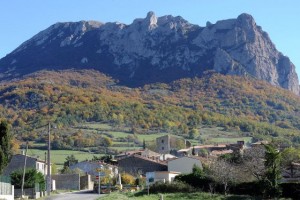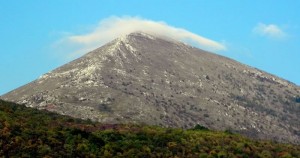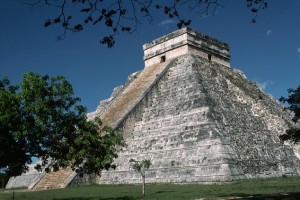With the End of the World fast approaching, I thought it would be interesting to look at the impact fears of Earth’s imminent destruction are having on tourism. It may seem like an odd line of inquiry, but in fact many people have flocked to areas believed to be, for various reasons, the only place(s) that will be standing when the world ends. 
The most popular destinations all seem to be mountains, particularly Pic de Bugarach in France and Mount Rtanj in Serbia, which are believed by many to have mystical powers or connections to aliens that will save those gathered nearby.
The towns surrounding these mountains have been inundated with requests for rooms. One hotel manager in a town near Mount Rtanj reported that in one day 500 people tried to book rooms, and conditions are similar in the French town of Bugarach, below Pic de Bugarach, and in Sirince, a small Turkish town believed to have “special energy.” The mayor of Bugarach even went so far as to release a statement requesting that doomsday tourists not come to Bugarach, and ordered police officers to block access to the town and to the mountain to avoid chaos and overcrowding. In fact, the mayor drafted these plans about 2 years ago in anticipation of the flood of doomsday tourists, news agencies, and other outsiders that he knew would descend on the town as December 21st, 2012 approached. A  hotel owner in Sirince claimed that demand for beds was about 10 times greater than capacity, and stated that he is very scared for what could happen to the town if 10,000 visitors show up and there is no where for them to stay.
hotel owner in Sirince claimed that demand for beds was about 10 times greater than capacity, and stated that he is very scared for what could happen to the town if 10,000 visitors show up and there is no where for them to stay.
Not everyone is as worried about the chaos and overcrowding, however; many are aiming to capitalize on the record spikes in tourism. For example, a man in Bugarach is offering tourists his 4-bedroom house for 1500 euros a night and spots for campers in the adjacent field at a more reasonable 400 euros. Visitors will have the opportunity to buy “authentic Bugarach stones” (1.5 euros per gram) and bottles of water from the nearby spring (15 euros a bottle), and to finish off their day with a slice of “Apocalypse pizza” and a glass of “End of the World” wine.
Doomsday tourism has also taken off in Mexico and Central America, where a variety of “End of the World” Mayan-themed celebrations are being held. Tourists are being invited to attend all-inclusive excursions and religious ceremonies at Mayan holy sites, and “Apocalypse parties” are being thrown throughout the region. Hotels located near ruins have been booked up, some since last year, and many events have been planned by the locals to greet their visitors from around the world, including tribal drumming and ritual dances.
Naturally, not all are pleased about this turn of events. Some have accused travel agencies and others of fearmongering, twisting the truth, and exploiting the Mayan culture. Furthermore, doomsday tourism is certainly  not responsible or sustainable. It is not a new phenomenon; in recent years doomsday tourism to global warming sites has grown in popularity, with people believing this could be their last chance to see glaciers, the Arctic, and so on. This, predictably, only increases the speed at which these destinations are deteriorating, as the increased foot traffic and jet emissions damage the landmarks these tourists are hoping to see before they disappear. The mayor of Bugarach may have it right: closing down the town may be the best way to protect it, despite the loss of potential revenue gains from a spike in tourism. Of course, this is likely a once-in-a-lifetime event, not a steady flood of tourists, so perhaps he should take advantage of this opportunity.
not responsible or sustainable. It is not a new phenomenon; in recent years doomsday tourism to global warming sites has grown in popularity, with people believing this could be their last chance to see glaciers, the Arctic, and so on. This, predictably, only increases the speed at which these destinations are deteriorating, as the increased foot traffic and jet emissions damage the landmarks these tourists are hoping to see before they disappear. The mayor of Bugarach may have it right: closing down the town may be the best way to protect it, despite the loss of potential revenue gains from a spike in tourism. Of course, this is likely a once-in-a-lifetime event, not a steady flood of tourists, so perhaps he should take advantage of this opportunity.
So how do you feel about doomsday tourism? Is it appropriate to encourage and benefit from this one-time boost in tourism, or should more places be shutting down to preserve landmarks and prevent chaos?
And finally, I would like to remind you all of responsible, sustainable tourism practices during this holiday season. Whether you’re traveling to an end-of-the-world party or just regular holiday travel, there’s always something you can do to make your trip a bit more responsible.


